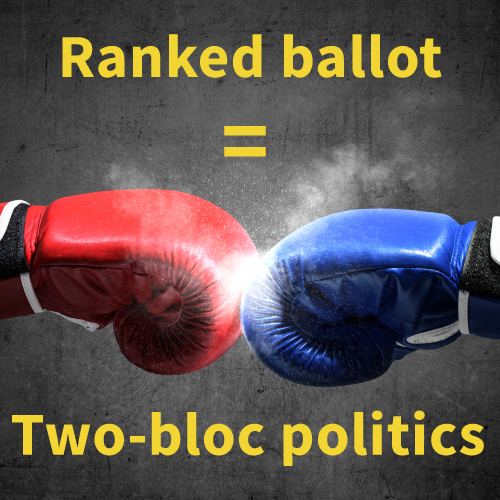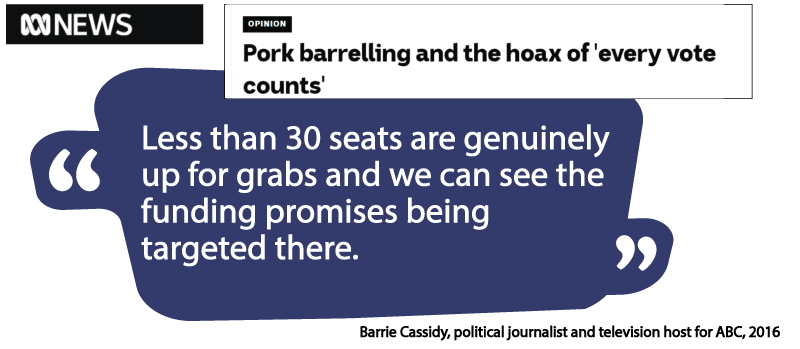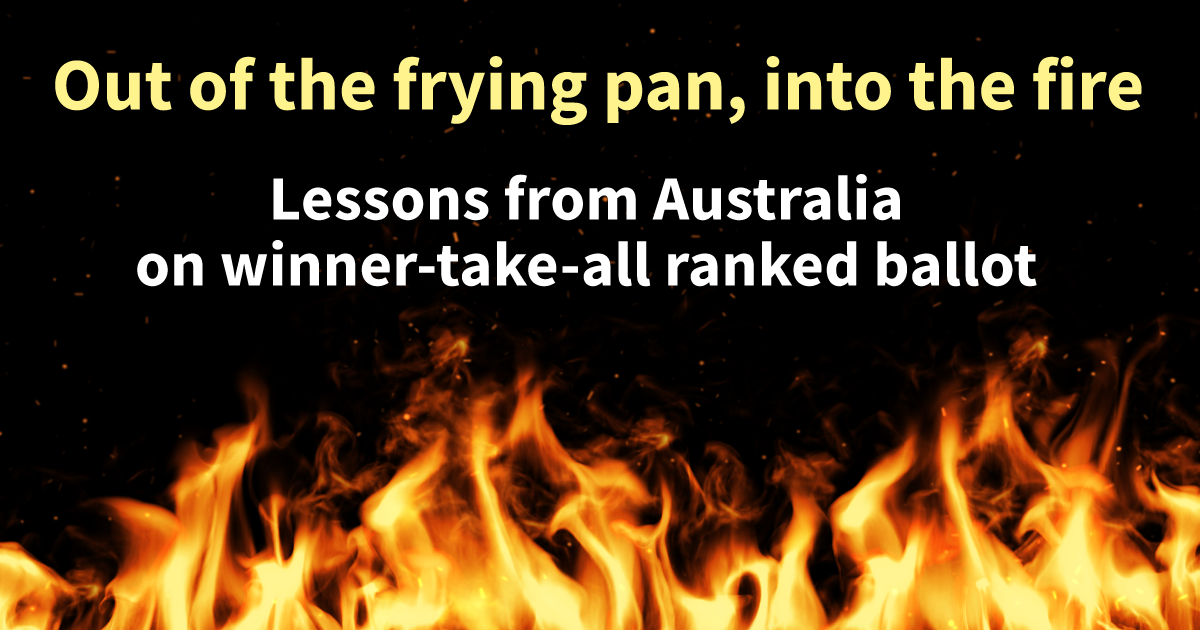
Winner-take-all ranked ballots (properly called Alternative Vote) is the system being pushed by Justin Trudeau.
In the last Ontario election, former Ontario Liberal leader Steven Del Duca pledged to force winner-take-all ranked ballots on Ontario or he’d resign. Yet polling showed that 74% of Ontarians didn’t think any single party should unilaterally decide our voting system.
A 2020 Leger poll showed that a strong majority of Canadians (80%), support an independent, non-partisan Citizens’ Assembly on Electoral Reform to move forward.
Adding a ranked ballot to first-past-the-post can make results even more distorted than now. It can make our politics more divided and hostile, and serve to block future reform. Learn more about the many serious problems with non-proportional ranked ballots here.
What can we learn from real-world experience in Australia, which has used this system for 100 years? Keep reading.
Liberal leader Justin Trudeau says politics will be “less divisive” with winner-take-all ranked ballot. Trudeau says winner-take-all ranked ballot will “force parties to come together.”
He’s not telling you the truth.
The winner-take-all ranked ballot can make politics even more hostile and divisive.
Australia has used winner-take-all ranked ballot for 100 years. Click here to see some real political ads from Australia.
Click here to listen to democracy and climate campaigner Anna Keenan, originally from Australia, talk about what politics is really like under a winner-take-all ranked ballot and why we shouldn’t be fooled by Justin Trudeau.
Winner-take-all ranked ballot in Australia has locked in a two-bloc system and has brought out the worst in politicians. MPs had to be booted from the legislature 400 times over two years for bad behaviour.
Policy lurch (abrupt policy reversals when governments change) has had a devastating impact on climate policy. Australia now ranks dead last in on the policy scale of the Climate Change Performance Index and near the of list on performance.
Click here to read our blog on impact of winner-take-all ranked ballot on Australian politics.
Winner-take-all ranked ballot in Australia: real ads and headlines
In the last Ontario election, former Ontario Liberal leader Steven Del Duca echoed Justin Trudeau on electoral reform, claiming that that winner-take-all ranked ballots will make politics more “cooperative” and “respectful“.
According to Del Duca, winner-take-all ranked ballots would “suck the poison out of the politics that we have right now” because “it won’t make sense for leaders and parties to demonize each other.”
This is not how winner-take-all systems work in the real world. The winner-take-all ranked ballot, by funneling votes to the larger parties and driving us closer to a two party system, can make politics even more hostile and divisive. See some examples from Australia below and judge for yourself.
Political ads from Australia
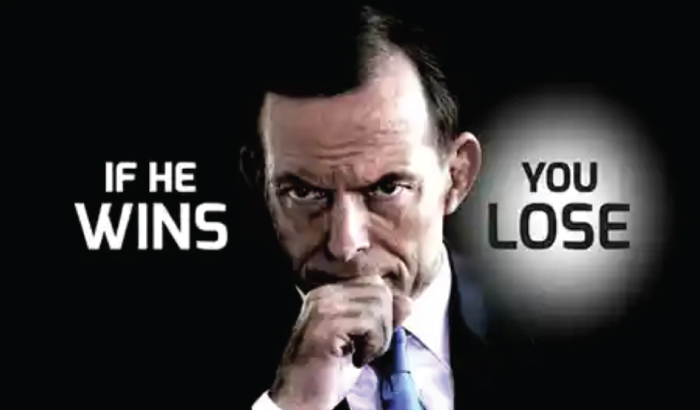
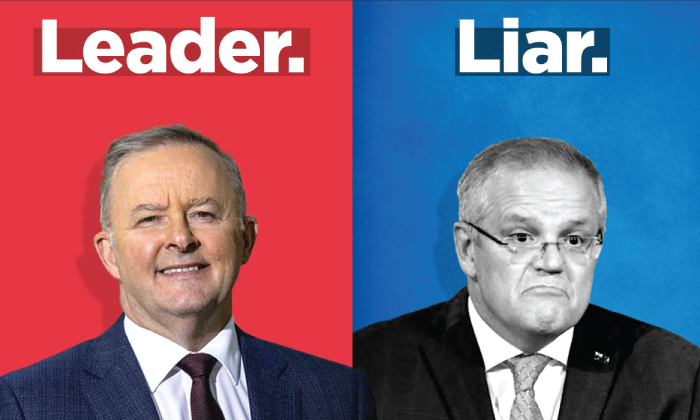
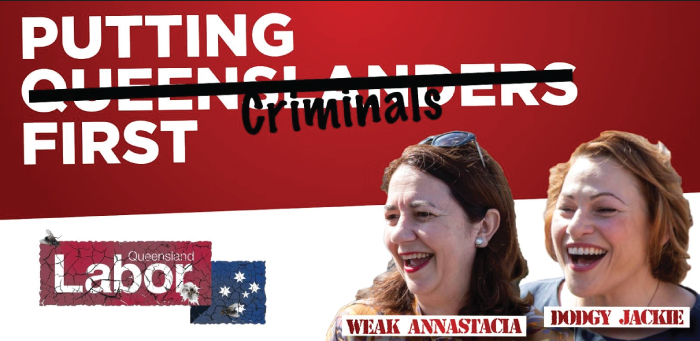
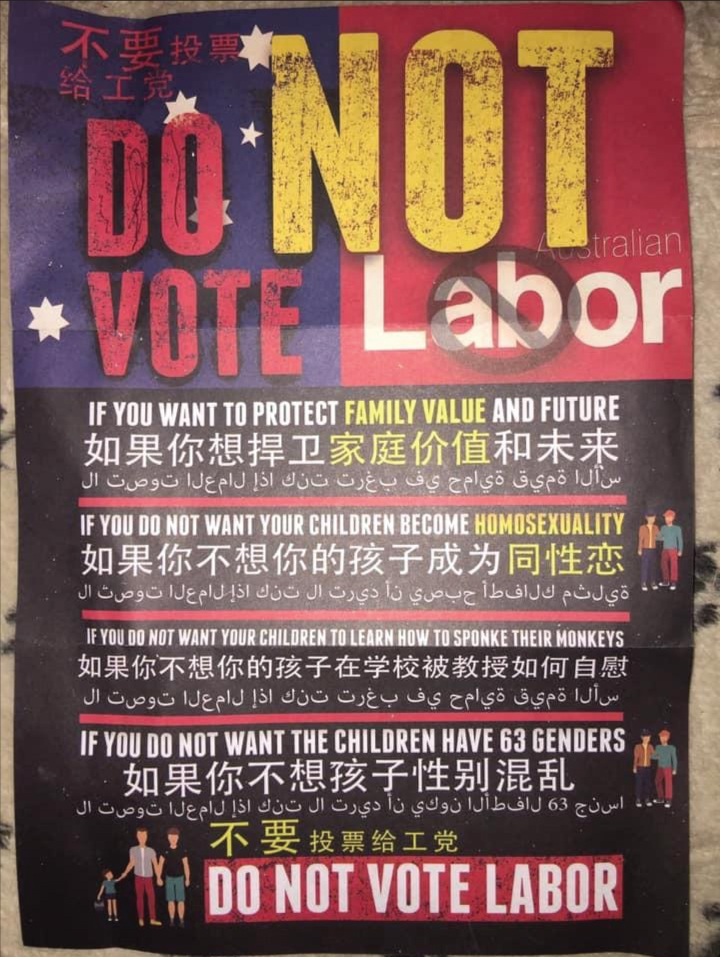

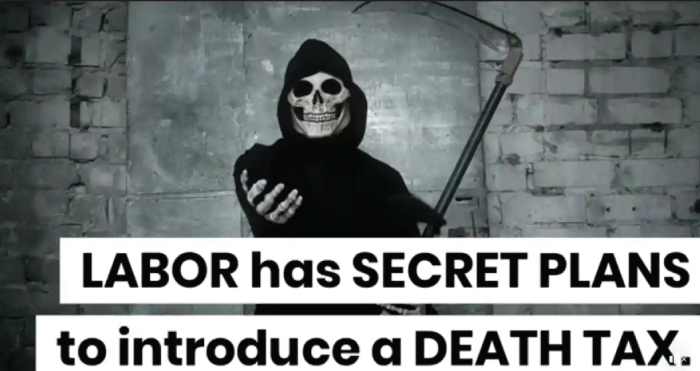
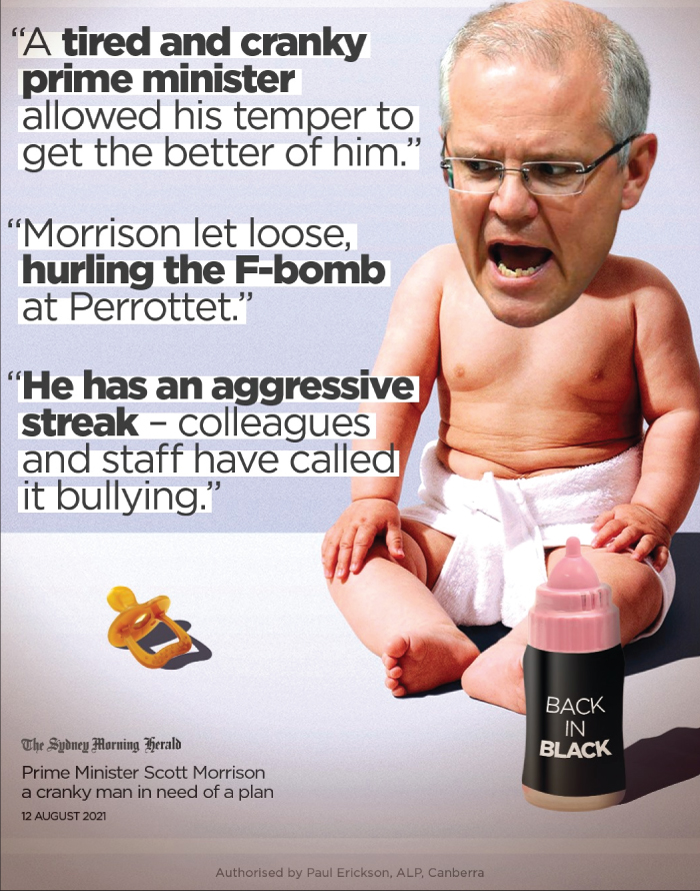
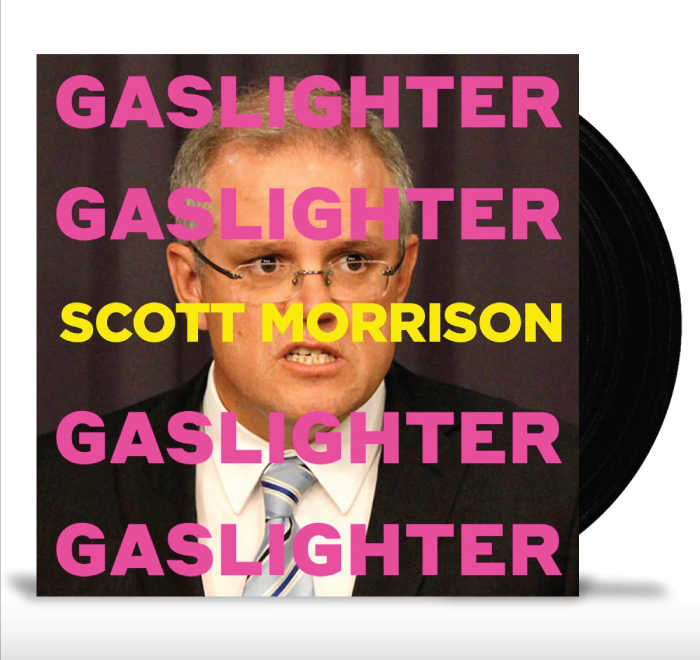
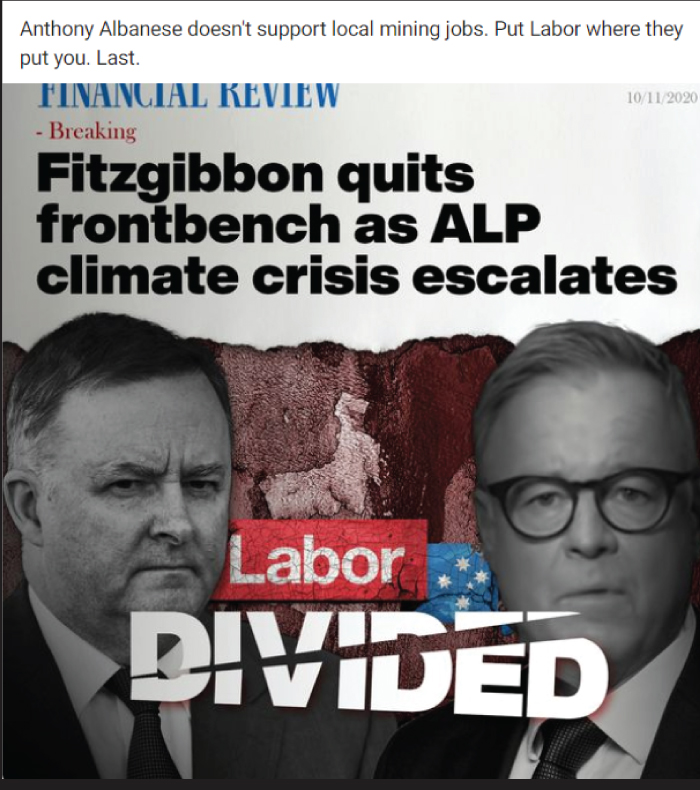
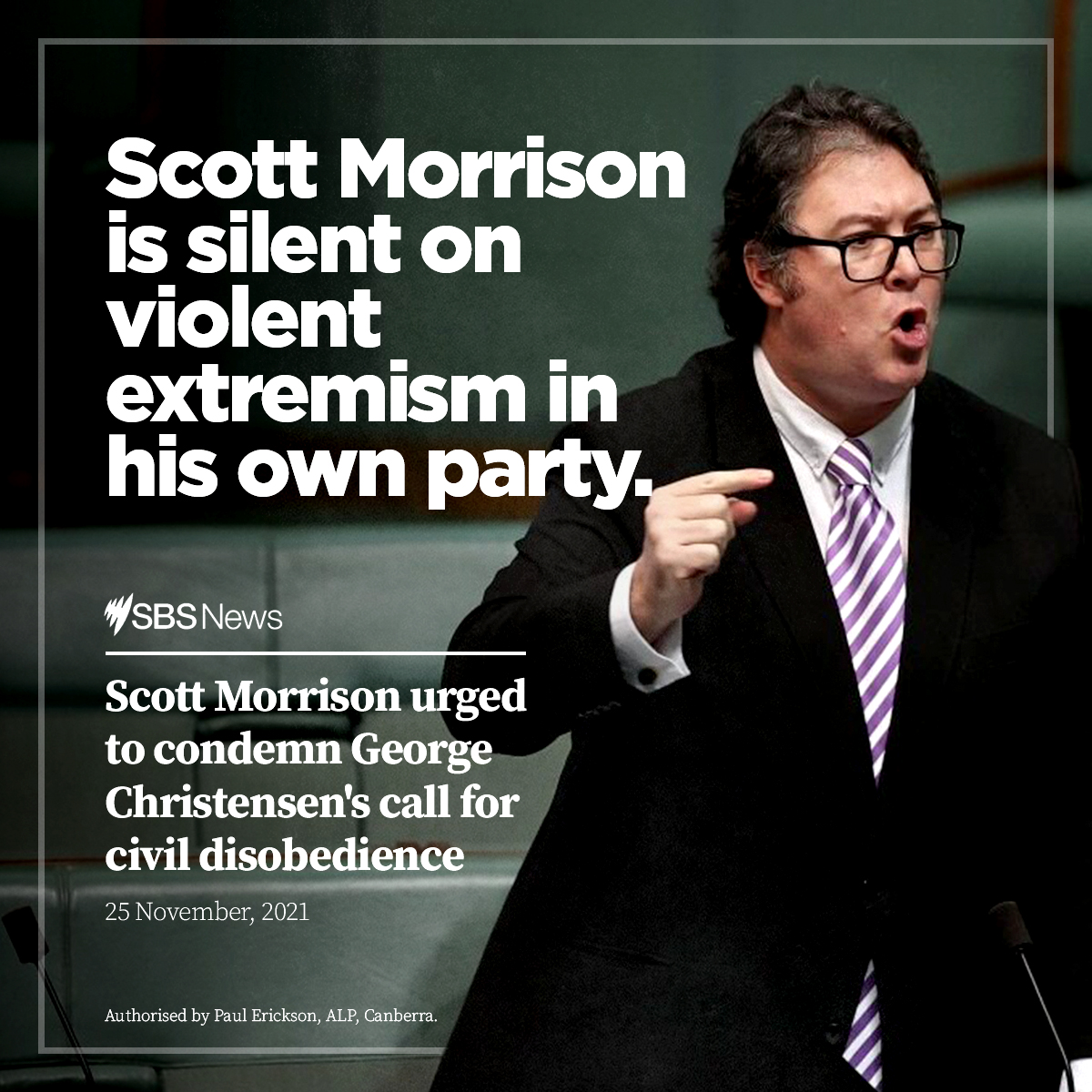
Blog: Out of the frying pan, into the fire: Lessons from Australia
Only two countries in the world use Alternative Vote (winner-take-all ranked ballot) to elect their lower houses—Australia and Papua New Guinea.
By contrast, over 90 nations use proportional representation—including over 80% of countries in the Organization for Economic Cooperation and Development, which represents 80% of world trade and investment.
Let’s focus on Australia—a country with much in common with Canada.
Australia adopted Alternative Vote 100 years ago—a self-interested political maneuver by the conservative parties to stop “vote splitting” that was allowing Labor candidates to win.
What is the result of the winner-take-all ranked ballot in Australia today?
A Two-Party System
The Alternative Vote in Australia has produced an intractable two-party system: Labor and the Liberal-National Coalition.
The conservative Liberal-National “coalition” is a permanent one. Formed in 1923, this is not the kind of “coalition” referred to in proportional systems, where distinct parties may work with different partners in government.
No other party but the big two have ever been part of a government.
Voters for Third Parties and Smaller Parties Are Almost Shut Out
Although voters are free to rank their preferences any way they want, voters for third parties are almost entirely shut out.
For example, the Australian Green Party has never won more than one seat, even though it obtained 11.8% of the vote in 2010 and 10.5% of the vote in 2019.
In 2019, 28% of voters aged 18-34 voted Green, but their true preferences were ignored.
Overall in 2019, parties other than the big two got 25.3% of first preference votes but only 3.3% of the seats.
As John and Hargreaves (2011) note: “Alternative Vote is also unique in its tendency to direct votes into seats for the two established major parties and prevent the success of new movements and parties, especially moderate parties”, producing “a rigid, adversarial, two-party system.”
Alternative Vote Produces False Majorities and Wrong-Winner Elections
False majority governments of the kind we have in Canada are even more common in Australia than they are here. Since 1975, Australia has had a majority government after every election but one (in 2010) and all of these were false majorities based on 39% to 48% of the popular vote.
Winner-take-all voting in Australia has produced right-wing governments in 32 of the last 50 years (64%). Three of those governments were wrong-winner outcomes, resulting in the opposite of voters’ intent (when the right formed government despite winning less of the popular vote than the left).
The current government received 32.6% of first preference votes, yet has a “majority” government and is not required to compromise with any other party.
Alternative Vote Exaggerates the Landslides of the “Winners” Even More than First-Past-the-Post
Even worse, expert testimony to the Canadian federal Electoral Reform Committee and the report of Jenkins Commission (the Independent Commission on the Voting System) in the UK showed that Alternative Vote can produce election results more distorted than those under first-past-the-post – giving even bigger seat bonuses and inflated majorities to the winning party. As Towns (2021) notes, “This propensity to exaggerate the victory of the winners also leads reformers to oppose AV.”
This propensity was clearly on display in Australia in 2021 when a single party in Western Australia (left of the picture below) got 60% of the vote but picked up 90% of the seats.
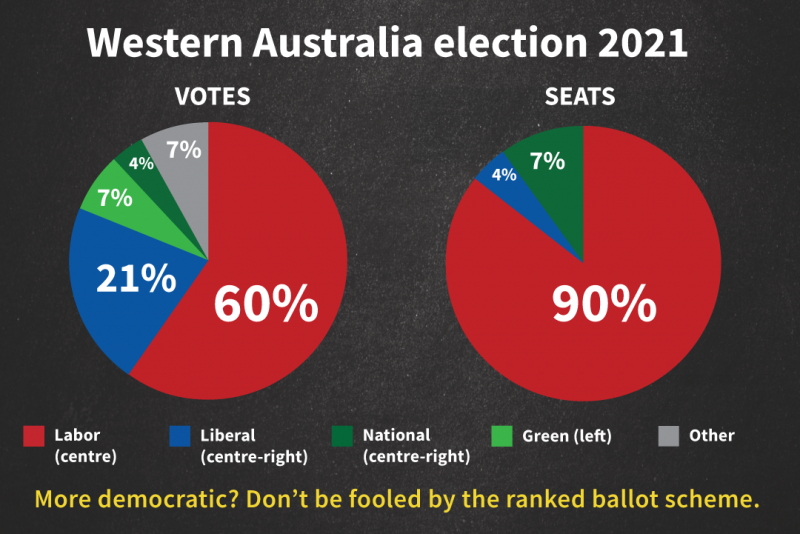
Power of the Party Bosses
Many Canadians are concerned with the power of party bosses and too much power being concentrated with some unelected spin doctors in the Prime Minister’s Office. Winner-take-all ranked ballot does nothing to mitigate this concentration of power. As John and Hargreaves (2011) note, the research is clear:
“Alternative Vote when in concert with other aspects of the electoral system (compulsory voting, party control over pre-selections and the use of How to Vote cards) results in a system heavily focused on the party not on the voter… The Australian electoral system gives parties a great deal of control over politics and that that control is on the rise (Farrell and McAllister 2006). Orr and Ewing (2011) come to a similar conclusion with regards to AV‘s propensity to increase the power of political parties relative to voters.”
Alternative Vote works to “manufacture a majority and ensure that voter choices do not interfere with the two sectional parties control over the system.”
As expert Mark Rodrigues explains in a report on the Parliament of Australia website, power is concentrated at the top:
“Strict party discipline over the behavior of MPs has challenged conventions of responsible government and aided the ascendency of the executive over the agenda of parliament.”
Over the decades, power has become increasingly concentrated in the Prime Minister’s Office. As Evans explains:
“This tendency to power concentration and one-person government has proceeded further in Australia than in its sister countries in the so-called Westminster world. There is the concentration of political discussion on leadership and leaders; the question of who occupies the throne has achieved supreme if not exclusive importance. Parliament and cabinet are seldom mentioned as part of the decision-making process; all major decisions are seen as the personal decisions of prime ministers. This perception is basically accurate: parliament and cabinet have minimal roles. The enormous growth in the size of the prime minister’s office has occurred precisely because that office now virtually is the government.”
Strategic Voting
In any two-party winner-take-all system, voters will always be faced with the dilemma of how to help their preferred party while trying to avoid handing power to the party they most despise.
In Australia, with Alternative Vote, strategic voting campaigns aren’t eliminated—they’re institutionalized. Parties push “How to Vote” cards at polling stations, telling voters how to mark their preferences. The BBC bluntly describes these cards as “a method of tactical voting decided by party leaders.”
The How to Vote cards are often the result of backroom deals between parties.
As one commentator notes:
“Voters who follow the card are not thinking about their reasons for ordering candidates on the ballot but are willingly deferring that right to parties intent on manipulating them to shore up power.”
John and Hargreaves (2011) conclude:
“Alternative Vote encourages a strategic major party voter to preference the other major party last, which normalizes hostile partisan feelings and a tendency to view the other major party as the enemy, thus enabling a highly corrosive party dialogue.”
Politics is Extremely Adversarial
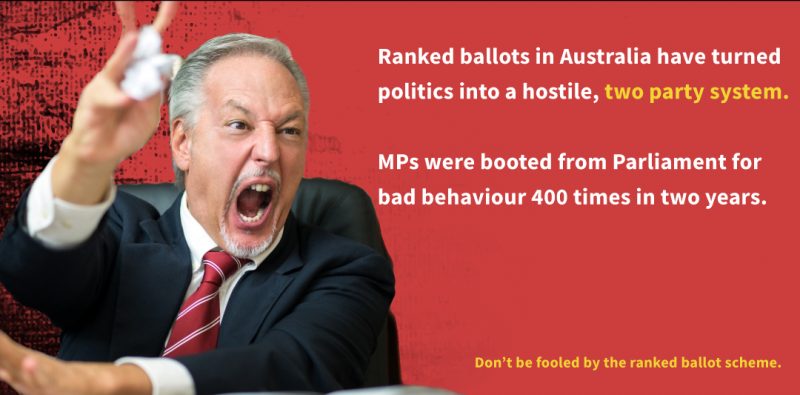
“Blood sports” is how Professor Mark Evans of the University of Canberra Institute for Governance and Public Analysis describes Australia’s politics.
John and Hargreaves conclude: “Alternative Vote is unique amongst ordinal voting systems in that it supports and perhaps encourages hostility between the largest parties thus contributing to Australia‘s harsh political culture.”
Researchers at Harvard and Columbia University conclude that Alternative Vote, instead of encouraging moderation, can even “intensify candidates’ incentives to target their core supporters at the cost of a broader appeal.”
The scale of the dishonest attack ads by parties has reached a feverish pitch, with 84% of Australians now supporting legislation for truth in political advertising.
Research has found that politics in Australia, under winner-take-all ranked ballot, is just as polarized as it is in other countries with winner-take-all electoral systems. Winner-take-all politics produces a Parliament characterized by grueling partisanship. According to a report by Dr. Marc Rodrigues, Question Period in Australia amounts to a war of scripted talking points:
“Question Time in the House of Representatives is often criticized for declining parliamentary standards and accountability. Oppositions are inclined to use partisan attacks disguised as questions to embarrass the government to which Ministers respond with lengthy answers of marginal relevance… Much of the theatre of Question Time is characterized by disorder contrived to make the evening news.”
This is longstanding pattern. Unruly, disrespectful conduct is so common that between 1901 an 2016 30% of the MPs in the Australian Parliament were sanctioned for disorderly conduct.
From 2013 to 2015 alone, the Speaker ejected 400 MPs from the chamber—about three per day. From 1994 to 2016, 1508 disciplinary actions were levelled against MPs, including 1423 instances where MPs were ejected from the chamber for a period of one hour, referred to as being “sin binned”.
Unfortunately, despite public disgust, the amount of bad conduct has only been increasing in recent years, leading researchers to speculate “it may be that this penalty has contributed to greater disorder because members view it as little more than a slap on the wrist and of little deterrent value.”
Policy Lurch has had a Devastating Effect on Climate Policy
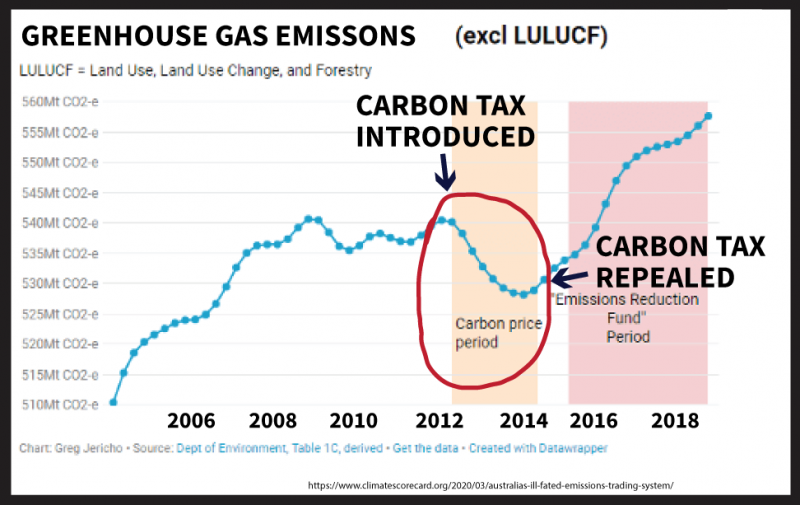
Researchers have long identified “policy lurch” as a side effect of winner-take-all voting systems. This refers to drastic shifts in policy, a pattern where one government reverses the policies of the previous government.
Policy lurch was on full display in Australia over the issue of a carbon tax. The chance for a bi-partisan deal was scuttled because a majority of MPs in the Liberal-National (conservative) bloc simply wanted an issue on which wage a election battle against the Labor Party.
When a carbon tax was brought in by the Labor government alone in 2012—which resulted in the biggest annual reduction in greenhouse gas emissions in 24 years—it was soon reversed by the Liberal-National (conservative) government in 2014.
Carbon pricing has never been reintroduced in Australia. The effects of a hostile, two-party system have continued to have a devastating impact on climate action. On the 2020 Climate Performance Index, the US ranks last, Canada ranks seventh from last and Australia sixth from last among 57 Countries plus the EU. Despite suffering catastrophic wildfires in recent years, on the Climate Policy Scale, Australia scores zero—dead last.
Pork Barrelling is rampant – and only a few swing ridings matter
As the ABC news headline above indicates, with winner-take-all voting systems only voters in a few seats really matter to the results, and that is where the government spends the money. Over time, the problem has only become more obvious.
In 2021, a study of grants awarded over three years in Australia showed that government spending was massively skewed to ridings held by the governing party, and to swing ridings. Key findings:
– Ridings held by opposition received $530 million. Those held by governing party received $1.9 billion.
– 21% of all the money that went to opposition-held ridings went to just two ridings – the two swing ridings targeted by the governing party in the previous election.
Summarizing the research, the Sydney Morning Herald concluded:
“The spending is so warped that voters on opposite sides of a suburban street can pay the same tax but get a vastly different slice of the spoils if they live in different electorates. Everything will depend on which seat the Liberals and Nationals think they can win… The message to people in “safe” seats, especially people on lower incomes in safe Labor electorates, is shocking: do not bother applying for help.”
Voter Trust in Politics Has Hit an All-Time Low in Australia — With Serious Implications
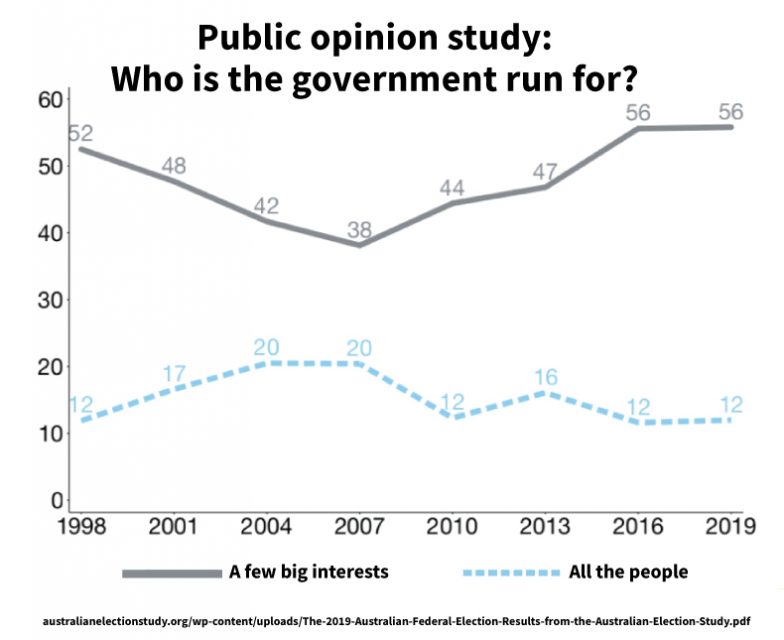
According to new research by Democracy 2025, an initiative of the Museum of Australian Democracy and the Institute for Governance and Policy Analysis at the University of Canberra, trust in political institutions in Australia has been in a nose-dive for a decade. In 2019, trust hit the lowest level since data has been available. The Australian Election Study found that only 12% think that government is run for “all the people” – most think it’s run for “a few big interests.”
If the trend continues, Democracy 2025 researchers concluded that by 2025, fewer than 10% of Australians will trust their politicians and political institutions. They mince no words about the consequences.
“Weakening political trust erodes civic engagement, reduces support for evidence based public policies, promotes risk aversion in government, and creates the space for the rise of authoritarian-populist forces.
Trust is the glue that facilitates collective action for mutual benefit. Without trust we don’t have the ability to address complex, long-term challenges.”
Does much of this sound frighteningly familiar? It should. Winner-take-all systems deliver more of what we don’t want in politics.



